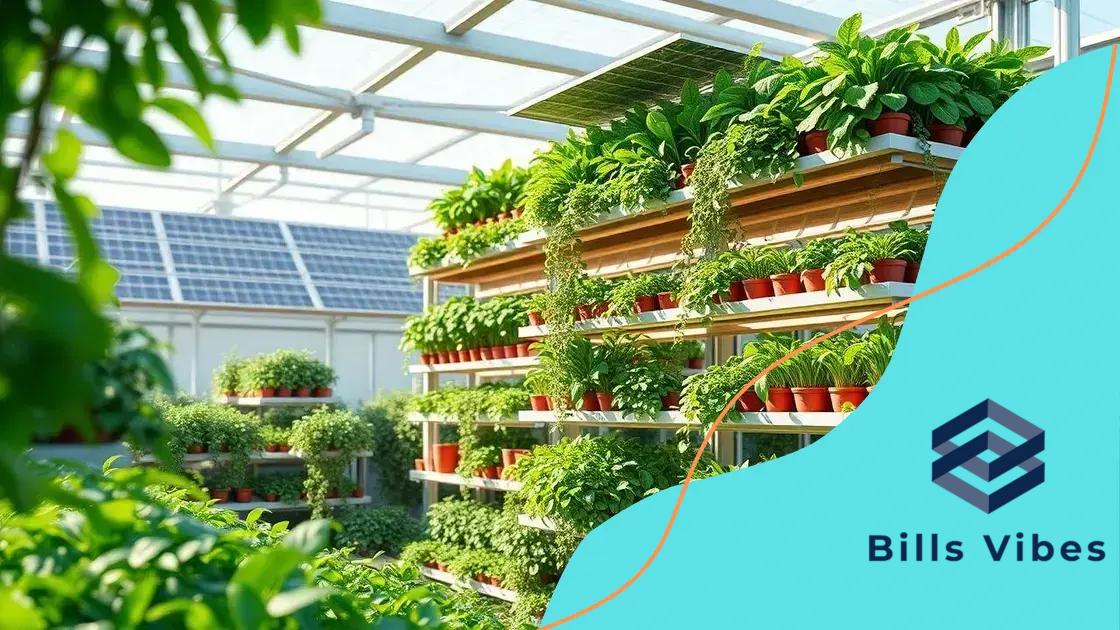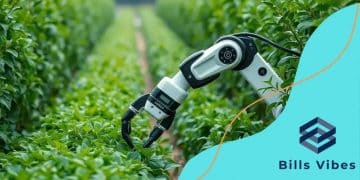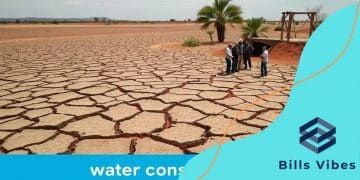Rise of vertical farming: transforming food production

The rise of vertical farming allows efficient food production in urban areas, using advanced technologies to conserve resources, reduce environmental impact, and enhance food security.
Rise of vertical farming is reshaping the future of agriculture. Imagine growing fresh produce in urban areas, minimizing land use and transportation costs. Curious about how this innovative approach works? Let’s dive in!
What is vertical farming?
Vertical farming is a modern agricultural practice that involves growing crops in vertically stacked layers. This innovative method optimizes space, making it ideal for urban environments where land is scarce. By using technology, farmers can produce fresh food closer to consumers, reducing the need for long-distance transportation.
One of the main features of vertical farming is the use of controlled environments. This means that farmers can control factors such as light, temperature, and humidity, creating the perfect conditions for plant growth. As a result, crops can grow faster and healthier compared to traditional farming methods.
Key Features of Vertical Farming
- Space Efficiency: By stacking plants, vertical farms can produce more food in a smaller area.
- Resource Conservation: They often use less water and pesticides compared to conventional farms.
- Year-Round Production: Controlled environments allow for continuous crop production, regardless of weather conditions.
This method not only maximizes yield but also minimizes the environmental impact. Vertical farming can contribute significantly to food security in urban areas, especially as the global population continues to grow.
Technologies such as hydroponics and aeroponics are commonly used in vertical farms. Hydroponics involves growing plants in nutrient-rich water, while aeroponics uses mist to deliver nutrients. Both methods save water and can improve plant growth rates.
Vertical farming also benefits from advances in lighting technology. LED lights are often used to provide the specific wavelengths of light that plants need for photosynthesis. This energy-efficient approach reduces electricity costs and enhances crop growth.
In summary, vertical farming offers an exciting solution to many challenges in modern agriculture. By integrating technology and sustainable practices, it has the potential to change how we think about growing food.
Benefits of vertical farming systems
Vertical farming systems offer a variety of benefits that make them an attractive option for modern agriculture. These systems help address challenges posed by traditional farming methods, particularly in urban areas.
One major benefit is space efficiency. Vertical farms use less land by stacking plants in layers. This approach can produce significantly more food in the same footprint compared to conventional farming. As cities grow, this efficiency becomes crucial for food production.
Advantages of Vertical Farming
- Water Conservation: Vertical farms utilize advanced irrigation systems that can reduce water consumption by up to 90% compared to traditional farms.
- Reduced Carbon Footprint: By growing food closer to where it is consumed, vertical farming minimizes transportation distances, cutting greenhouse gas emissions.
- Pesticide-Free Produce: Many vertical farms operate in controlled environments, reducing the need for harmful pesticides and resulting in cleaner food.
Vertical farming also allows for year-round crop production. Since these farms operate indoors, they are not affected by seasonal weather changes. This means that farmers can cultivate crops consistently, regardless of the climate outside.
Another advantage is the potential for local job creation. As vertical farms multiply in urban areas, they can provide new employment opportunities. This not only supports local economies but also fosters community engagement in sustainable practices.
Innovations in vertical farming technology continue to enhance its viability. For example, use of LED lighting tailored to plant growth improves energy efficiency while promoting faster growth.
Incorporating vertical farming systems into our food supply chain presents a sustainable solution that can significantly impact how we produce and consume food in the future.
How vertical farming impacts sustainability

Vertical farming greatly impacts sustainability in numerous ways. By utilizing innovative techniques, it minimizes the environmental footprint of food production while maximizing efficiency. This method significantly reduces the amount of land needed for agriculture.
One of the key aspects of vertical farming is its ability to conserve water resources. Traditional farming often requires vast amounts of water, but vertical farms use advanced irrigation systems that can cut water usage by up to 90%. This is crucial in areas facing water scarcity.
Benefits for the Environment
- Reduced Carbon Emissions: Growing food closer to urban consumers decreases the distance for transportation, which helps lower greenhouse gas emissions.
- Less Pesticide Use: Controlled environments in vertical farms reduce the need for chemical pesticides, leading to healthier produce and less environmental pollution.
- Minimized Land Use: By stacking layers of crops, vertical farming minimizes the land needed compared to traditional farming, allowing natural habitats to remain preserved.
Vertical farming also promotes biodiversity. By growing a variety of crops in a smaller space, these farms can support a wider range of plant species. This diversity can enhance ecosystem resilience and help combat pests naturally.
Another important impact of vertical farming on sustainability is energy efficiency. Many vertical farms use renewable energy sources, such as solar or wind power, to operate their facilities. This shift reduces reliance on fossil fuels, further contributing to a cleaner environment.
As technology advances, vertical farming continues to evolve, offering new solutions to address food security and environmental issues. By integrating sustainable practices, this approach can significantly benefit future generations.
Technologies behind vertical farming
The success of vertical farming largely depends on advanced technologies that enhance efficiency and productivity. These technologies facilitate the optimal growth of plants in limited spaces, making urban agriculture a reality.
One key technology used in vertical farming is hydroponics, which allows plants to grow in nutrient-rich water instead of soil. This method conserves water and eliminates the need for pesticides, making it a cleaner alternative. Hydroponics also supports faster growth rates, allowing farmers to harvest crops more frequently.
Innovative Systems
- Aeroponics: This technique delivers nutrients through a fine mist, providing plants with oxygen and nutrients simultaneously. It uses even less water than hydroponics.
- LED Lighting: Energy-efficient LEDs provide the specific light wavelengths that plants need for photosynthesis. This technology can significantly reduce energy costs while promoting plant growth.
- Climate Control Systems: Vertical farms utilize advanced sensors and controls to maintain ideal conditions for plant growth. This can include temperature, humidity, and CO2 levels.
Another crucial technology is data analytics. Vertical farms often use software to monitor and analyze plant health, growth rates, and environmental conditions. This data helps farmers make informed decisions, optimizing their operations. By leveraging technology, vertical farms can achieve higher yields with fewer resources.
Moreover, automation plays a significant role in vertical farming. Robots can handle tasks such as planting, harvesting, and packaging produce. This automation reduces labor costs and enhances efficiency, allowing farms to operate more smoothly.
As technology continues to evolve, the potential for vertical farming expands. Innovations in robotics, IoT devices, and artificial intelligence offer exciting possibilities for the future of urban agriculture.
Future of food production with vertical farms
The future of food production with vertical farms is promising and full of possibilities. As the global population continues to grow, the demand for sustainable food sources increases. Vertical farming presents a solution to this challenge by optimizing space and resources.
One exciting aspect of vertical farming is its potential to increase food security. These farms can be located in urban areas, bringing fresh produce closer to consumers. This can help reduce food deserts, ensuring that everyone has access to healthy food.
Advancements in Technology
- Enhanced Automation: Future vertical farms are likely to use more advanced robotics and AI to automate planting, harvesting, and monitoring plants.
- Smart Sensors: IoT devices will provide real-time data to optimize growth conditions, making vertical farms even more efficient.
- Climate Resilience: Vertical farms can withstand extreme weather conditions, ensuring a steady food supply regardless of climate changes.
Moreover, vertical farms can contribute positively to reducing carbon emissions. They minimize the need for transportation since food can be grown near where it will be consumed. This shift will lead to lower greenhouse gas emissions and a healthier planet.
Another important factor is the potential for local economies. As vertical farms grow in number, they can create jobs and stimulate local businesses. This growth can lead to thriving communities with sustainable practices at their core.
In addition to typical crops, future vertical farms may cultivate specialty items such as medicinal plants and gourmet herbs, appealing to a broader market. This diversification can help boost the economy and meet changing consumer demands.
Vertical farming represents a revolution in how we produce food, making it more efficient, sustainable, and accessible. As technology evolves and resources become more limited, vertical farming will play a crucial role in defining the future of agriculture.
FAQ – Frequently Asked Questions about Vertical Farming
What is vertical farming?
Vertical farming is an innovative method of growing crops in vertically stacked layers, optimizing space and resources.
How does vertical farming contribute to sustainability?
It conserves water, reduces carbon emissions, and minimizes land use, making food production more environmentally friendly.
What technologies are used in vertical farming?
Technologies like hydroponics, aeroponics, LED lighting, and automation are commonly used to enhance efficiency and plant growth.
What are the benefits of vertical farming for urban areas?
Vertical farming provides fresh produce locally, improves food security, creates jobs, and supports local economies.






